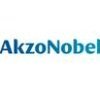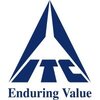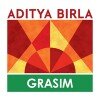
i
Asian Paints
Filter interviews by
Asian Paints Fire & Safety Officer Interview Questions and Answers
Asian Paints Fire & Safety Officer Interview Experiences
1 interview found
I applied via Company Website and was interviewed in Jul 2021. There was 1 interview round.
Interview Questionnaire
1 Question
- Q1. They were asked about fire equipment used in industrial area or company and also fire extinguisher refilling or maintenance.
Interview Preparation Tips
Interview questions from similar companies

Fire & Safety Officer Interview Questions & Answers
Berger Paintsposted on 19 Aug 2023

(2 Questions)
- Q1. What's the hazards.
- Ans.
Hazards in a fire and safety officer role include fire, smoke, hazardous materials, electrical hazards, and physical injuries.
Fire: risk of burns, smoke inhalation
Smoke: respiratory issues, visibility impairment
Hazardous materials: chemical exposure
Electrical hazards: risk of shock or electrocution
Physical injuries: slips, trips, falls
- Q2. Which type of fire.
- Ans.
There are different types of fires classified based on the materials involved.
Class A fires involve ordinary combustibles like wood, paper, and cloth.
Class B fires involve flammable liquids like gasoline and oil.
Class C fires involve energized electrical equipment.
Class D fires involve combustible metals like magnesium and titanium.
Class K fires involve cooking oils and fats.
(3 Questions)
- Q1. What is checked moving machinery.
- Ans.
Moving machinery is checked for proper functioning, safety features, and maintenance requirements.
Check for any signs of wear and tear on moving parts
Ensure all safety guards are in place and functioning correctly
Inspect lubrication levels and make sure they are adequate
Test emergency stop buttons and other safety features
Verify that all warning signs and labels are visible and legible
- Q2. Why need document of vehicle.
- Ans.
Documents of vehicles are necessary for identification, registration, and compliance with laws and regulations.
Identification of the vehicle and its owner
Registration with the appropriate authorities
Compliance with laws and regulations
Proof of ownership and insurance
Verification of vehicle's history and maintenance records
- Q3. Who is a peson responsible at site.
- Ans.
The person responsible at a site is typically the Fire & Safety Officer who oversees all safety protocols and emergency procedures.
The Fire & Safety Officer is responsible for ensuring compliance with fire safety regulations and conducting regular safety inspections.
They are in charge of developing and implementing emergency response plans, conducting fire drills, and training employees on safety procedures.
The Fire & ...

I applied via Referral and was interviewed in Jul 2021. There were 7 interview rounds.
Interview Questionnaire
5 Questions
- Q1. Self introduction.
- Ans. Start from hometown ,then family background ,then educational background,professional journey
- Q2. Reason of change
- Q3. Strength and weakness
- Ans. Strength- adaptive and discipline with examples . Weakness -bad hand writing
- Q4. Day schedule and planning for month and week
- Ans.
I plan my day, week, and month in advance to ensure maximum productivity and efficiency.
I prioritize tasks based on their urgency and importance
I use a planner or calendar to keep track of deadlines and appointments
I allocate time for prospecting, follow-ups, and meetings
I review my progress regularly and make adjustments as needed
I set realistic goals and break them down into smaller, achievable tasks
- Q5. Started the day with pre planned way and days together makes week and month
Interview Preparation Tips

I applied via Referral and was interviewed in Oct 2022. There were 3 interview rounds.

Gernal question to test you basic understanding
(4 Questions)
- Q1. Video call interview to know about your self and most importantly... Your attitude
- Q2. Basic questions related to your past experience and current situation and you future goals
- Q3. Education background and your achievements
- Ans.
I have a Bachelor's degree in Business Administration and have achieved consistent sales targets in my previous roles.
Bachelor's degree in Business Administration
Consistently achieved sales targets in previous roles
- Q4. Basic understanding of customer Profiling and Need gernetion
Interview Preparation Tips
Not only your product knowledge also your communication skill and Negotiation understanding.

Interview Questionnaire
2 Questions
- Q1. What's your Strength and weakness?
- Q2. How much salary you expect?

I applied via Walk-in and was interviewed before Apr 2021. There were 2 interview rounds.

Interview Preparation Tips

I applied via Recruitment Consultant and was interviewed in Dec 2020. There were 4 interview rounds.
Interview Questionnaire
3 Questions
- Q1. Market solution and target achievement and protect sale retal sambandhi problem wolf and abav
- Q2. Target achievement
- Q3. Ye
Interview Preparation Tips

I applied via Referral and was interviewed before Apr 2020. There was 1 interview round.
Interview Questionnaire
2 Questions
- Q1. What is sales
- Ans.
Sales is the process of persuading a potential customer to purchase a product or service.
Sales involves identifying potential customers and their needs
Salespeople use various techniques to convince customers to buy
Sales requires building relationships with customers to encourage repeat business
Sales can involve both face-to-face interactions and online transactions
Examples of sales include selling cars, insurance, and
- Q2. Some calculations
Interview Preparation Tips

I applied via Walk-in and was interviewed in May 2020. There were 3 interview rounds.
Interview Questionnaire
4 Questions
- Q1. How to work market
- Ans.
To work the market as a Sales Executive, one must understand the target audience, build relationships, analyze competition, and adapt strategies.
Identify the target audience and their needs
Build relationships with potential customers through networking and communication
Analyze competition to identify unique selling points and market positioning
Adapt sales strategies based on market trends and customer feedback
Utilize v...
- Q2. Work in marketing and meeting and sales
- Q3. Questions how to dealer by stock
- Q4. Payment suvidha
Interview Preparation Tips

I applied via Company Website and was interviewed before Jan 2021. There were 2 interview rounds.
Interview Questionnaire
2 Questions
- Q1. Seles improvements, retail relationships building.
- Q2. Salary discussion, job profile, role ,work preference
Interview Preparation Tips
Tell us how to improve this page.
Asian Paints Interviews By Designations
- Asian Paints Direct Sales Representative Interview Questions
- Asian Paints Territory Sales Executive Interview Questions
- Asian Paints Teritory Sales Officer Interview Questions
- Asian Paints Sales Officer Interview Questions
- Asian Paints Sales Executive Interview Questions
- Asian Paints ECA Interview Questions
- Asian Paints Color Consultant Interview Questions
- Asian Paints Ezycolour Consumer Associate Interview Questions
- Show more
Interview Questions for Popular Designations
- Fire & Safety Supervisor Interview Questions
- Safety Engineer Interview Questions
- Safety Manager Interview Questions
- Senior Safety Officer Interview Questions
- Safety Officer Interview Questions
- Fireman and Safety Interview Questions
- Senior Safety Engineer Interview Questions
- Safety Supervisor Interview Questions
- Show more
Interview Questions from Similar Companies
Fast track your campus placements
Asian Paints Fire & Safety Officer Reviews and Ratings
based on 2 reviews
Rating in categories
|
Direct Sales Representative
644
salaries
| ₹0 L/yr - ₹0 L/yr |
|
Teritory Sales Officer
610
salaries
| ₹0 L/yr - ₹0 L/yr |
|
Territory Sales Executive
608
salaries
| ₹0 L/yr - ₹0 L/yr |
|
Sales Executive
481
salaries
| ₹0 L/yr - ₹0 L/yr |
|
ECA
451
salaries
| ₹0 L/yr - ₹0 L/yr |

Berger Paints

Kansai Nerolac Paints

AkzoNobel

Pidilite Industries
- Home >
- Interviews >
- Asian Paints Interview Questions >
- Asian Paints Fire & Safety Officer Interview Questions

















